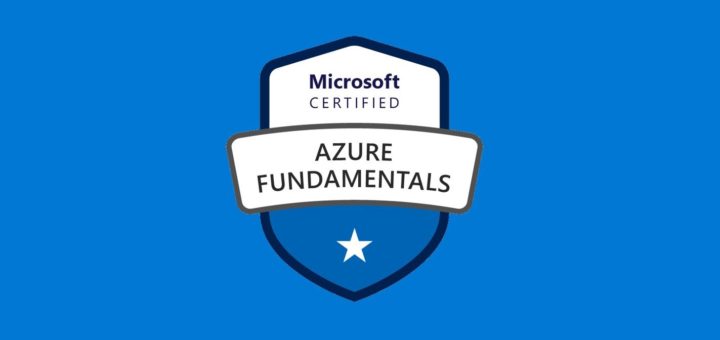Question #21
A serverless application uses an API Gateway and AWS Lambda.
Where should the Lambda function store its session information across function calls?
- A. In an Amazon DynamoDB table
- B. In an Amazon SQS queue
- C. In the local filesystem
- D. In an SQLite session table using “”DSQLITE_ENABLE_SESSION A
Correct Answer: A
Question #22
A Developer has created a software package to be deployed on multiple EC2 instances using IAM roles.
What actions could be performed to verify IAM access to get records from Amazon Kinesis Streams? (Select TWO.)
- A. Use the AWS CLI to retrieve the IAM group.
- B. Query Amazon EC2 metadata for in-line IAM policies.
- C. Request a token from AWS STS, and perform a describe action.
- D. Perform a get action using the “”-dry-run argument.
- E. Validate the IAM role policy with the IAM policy simulator.
Correct Answer: BE
Question #23
When writing a Lambda function, what is the benefit of instantiating AWS clients outside the scope of the handler?
- A. Legibility and stylistic convention
- B. Taking advantage of connection re-use
- C. Better error handling
- D. Creating a new instance per invocation
Correct Answer: B
Question #24
An application on AWS is using third-party APIs. The Developer needs to monitor API errors in the code, and wants to receive notifications if failures go above a set threshold value.
How can the Developer achieve these requirements?
- A. Publish a custom metric on Amazon CloudWatch and use Amazon SES for notification.
- B. Use an Amazon CloudWatch API-error metric and use Amazon SNS for notification.
- C. Use an Amazon CloudWatch API-error metric and use Amazon SES for notification.
- D. Publish a custom metric on Amazon CloudWatch and use Amazon SNS for notification.
Correct Answer: D
Question #25
A Developer has an application that can upload tens of thousands of objects per second to Amazon S3 in parallel within a single AWS account. As part of new requirements, data stored in S3 must use server side encryption with AWS KMS (SSE-KMS). After creating this change, performance of the application is slower.
Which of the following is MOST likely the cause of the application latency?
- A. Amazon S3 throttles the rate at which uploaded objects can be encrypted using Customer Master Keys.
- B. The AWS KMS API calls limit is less than needed to achieve the desired performance.
- C. The client encryption of the objects is using a poor algorithm.
- D. KMS requires that an alias be used to create an independent display name that can be mapped to a CMK.
Correct Answer: B
https://aws.amazon.com/about-aws/whats-new/2018/08/aws-key-management-service-increases-api-requests-per-second-limits/
Question #26
A company wants to migrate its web application to AWS and leverage Auto Scaling to handle pear workloads. The Solutions Architect determined that the best metric for an Auto Scaling event is the number of concurrent users.
Based on this information, what should the Developer use to autoscale based on concurrent users?
- A. An Amazon SNS topic to be triggered when a concurrent user threshold is met
- B. An Amazon Cloudwatch Networkin metric
- C. Amazon CloudFront to leverage AWS Edge Locations
- D. A Custom Amazon CloudWatch metric for concurrent users.
Correct Answer: D
https://docs.aws.amazon.com/connect/latest/adminguide/monitoring-cloudwatch.html
Question #27
A company is migrating its on-premises database to Amazon RDS for MySQL. The company has read-heavy workloads, and wants to make sure it re-factors its code to achieve optimum read performance for its queries.
How can this objective be met?
- A. Add database retries to effectively use RDS with vertical scaling
- B. Use RDS with multi-AZ deployment
- C. Add a connection string to use an RDS read replica for read queries
- D. Add a connection string to use a read replica on an EC2 instance.
Correct Answer: C
Question #28
A Developer is receiving HTTP 400: ThrottlingException errors intermittently when calling the Amazon CloudWatch API. When a call fails, no data is retrieved.
What best practice should first be applied to address this issue?
- A. Contact AWS Support for a limit increase.
- B. Use the AWS CLI to get the metrics
- C. Analyze the applications and remove the API call
- D. Retry the call with exponential backoff
Correct Answer: D
https://aws.amazon.com/premiumsupport/knowledge-center/cloudwatch-400-error-throttling/
Question #29
A Developer is testing a Docker-based application that uses the AWS SDK to interact with Amazon DynamoDB. In the local development environment, the application has used IAM access keys. The application is now ready for deployment onto an ECS cluster.
How should the application authenticate with AWS services in production?
- A. Configure an ECS task IAM role for the application to use
- B. Refactor the application to call AWS STS Assume Role based on an instance role
- C. Configure AWS access key/secret access key environment variables with new credentials
- D. Configure the credentials file with a new access key/secret access key
Correct Answer: A
Question #30
A Developer created a Lambda function for a web application backend. When testing the Lambda function from the AWS Lambda console, the Developer can see that the function is being executed, but there is no log data being generated in Amazon CloudWatch Logs, even after several minutes.
What could cause this situation?
- A. The Lambda function does not have any explicit log statements for the log data to send it to CloudWatch Logs.
- B. The Lambda function is missing CloudWatch Logs as a source trigger to send log data.
- C. The execution role for the Lambda function is missing permissions to write log data to the CloudWatch Logs.
- D. The Lambda function is missing a target CloudWatch Log group.
Correct Answer: C
Reference:
https://docs.aws.amazon.com/lambda/latest/dg/monitoring-functions.html




Thank you !!
Helped me in achieving my aws developer certification.